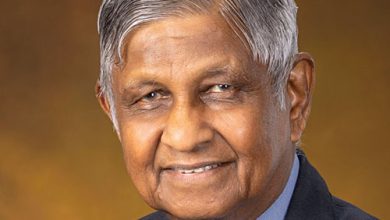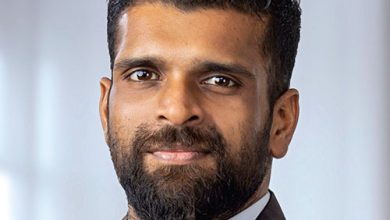CLIMATE FINANCE
IS COP RUNNING LOW ON HEAT?
Samantha Amerasinghe wonders whether climate finance will ever be a reality

Some are calling the climate finance agreement reached at the recent COP29 summit inadequate and an optical illusion while others consider it a historic outcome. This climate summit – which was held in Baku, Azerbaijan – unfolded against a looming political shift in the US as climate sceptic President-elect Donald Trump is set to take office on 20 January.
With an economy built on oil and gas exports, hosting COP was always going to be contentious for Azerbaijan, and at odds with a process that’s meant to be helping the world transition away from coal, oil and gas.
A big deal was struck but will it be sufficient to address the enormity of the climate issues being faced? And what will the path ahead look like?
Therefore, securing a new financial agreement in Baku was a top priority against the backdrop of uncertainty surrounding Trump’s climate perceptions. A major win at COP29 was the climate finance deal that was reached with rich countries pledging to contribute US$ 300 billion a year by 2035, to help poorer nations fight the effects of climate change.
However, the deal – which represents a substantial increase from the previous 100 billion dollar pledge – has been heavily criticised by developing nations as being woefully inadequate, and a “paltry sum” to address the scale of the climate crisis.
This is because it lacks clear grant based climate financing and offers only vague promises of funds to be mobilised. Most of the funding is expected to come from private investment and alternative sources such as proposed levies on fossil fuels.
The deal states that richer countries should take the lead in providing the US$ 300 billion while encouraging emerging economies to provide only voluntary contributions. Meanwhile, the US and EU want new wealthy emerging economies such as China – currently the world’s largest emitter – to contribute too.
It is disappointing to note that there was very little follow through on the transition away from fossil fuels, which was touted as ‘ground breaking’ at COP28 last year.
That was the first time when 200 countries, including top oil and gas producers such as Saudi Arabia and the US, acknowledged the need to phase down fossil fuels. Since then, nothing has transpired… and it only received a passing mention in Baku.
Due to the lack of progress and insufficient pace of action to avert a full-blown climate crisis, there are serious doubts about the COP process. Many are questioning whether it is still fit for purpose as years of celebrated climate agreements have not resulted in reducing greenhouse gas emissions. In fact, global temperatures continue to rise with 2024 on track to be the hottest year recorded.
COP30, which is to be held in Brazil in 2025, will try to reach an agreement on how a new round of nationally determined climate plans or contributions to global climate efforts (NDCs) should be put into action.
The next 12 months to COP30 will be critical. People will get a real sense of whether the world is serious about avoiding the worst climate impacts or not.
New NDCs are due before COP30 and they need to drastically improve on the 2.5°C global warming that the Earth is heading towards. That means establishing policies to transition away from fossil fuels and implementing reforms to the financial system so that the necessary funds can start flowing in.
Due to the uncertainty of the US in future climate talks, attention has shifted to who might become the real climate leader over the next four years. China seems the natural successor as it is becoming increasingly transparent and vocal on the amount of climate finance it’s providing to developing countries.
As China is still defined by the UN as a ‘developing country,’ it has no formal obligation to cut greenhouse gas emissions or provide financial help to poorer countries. However, Beijing plans to play a larger role in the future, at least on a voluntary basis, by agreeing to a formula in the finance deal that will allow its contributions to be counted in the overall fund for vulnerable countries.
A new level of collaboration between Europe and China could become the force for global climate action, if key tensions around trade and security are overcome. Both share a mutual interest in reducing their dependency on imported fossil fuels.
This alliance will work only if Europe and China can build a common front with the other G20 emerging economies to steer the world in the right direction, and combat the disruptive forces that want to protect the fossil fuel economy.
At a time of geopolitical uncertainty and distraction, keeping countries united on the climate should be the highest priority. And the world will have to wait until the next COP summit to see the level of global progress.






